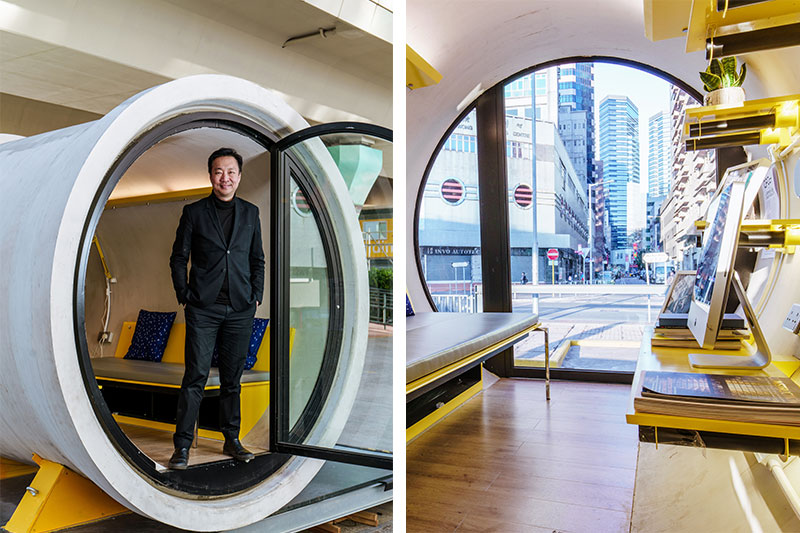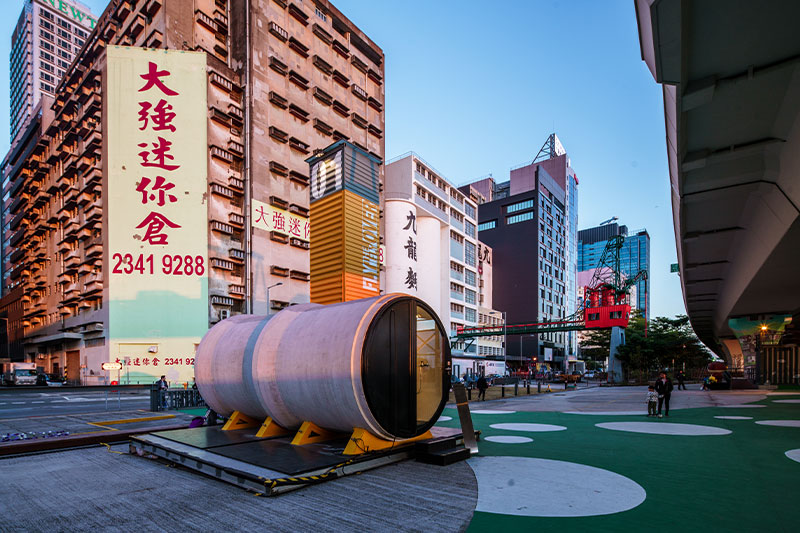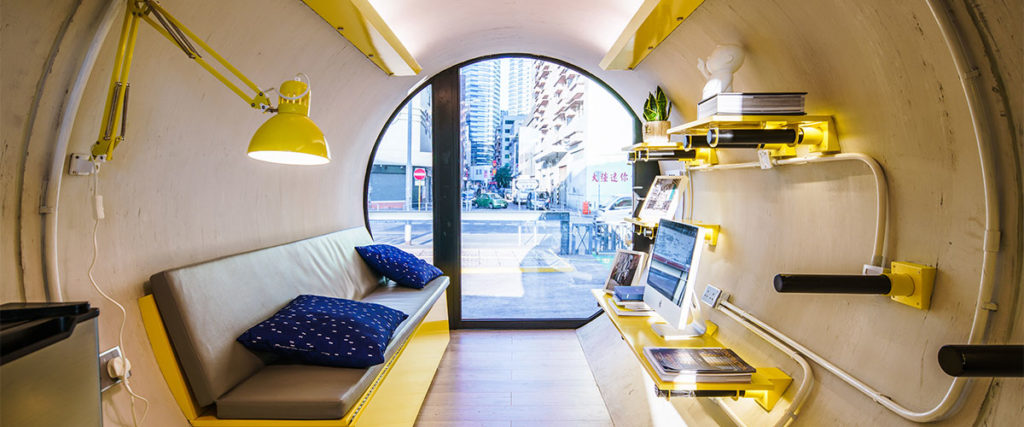Modern, sleek and affordable, the OPod is an experimental, 150-square-foot micro apartment with the potential to alleviate Hong Kong’s housing crisis.
In a city infamous for its cage homes and coffin cubicles, housing is a grim reality for many Hong Kongers who are crammed into high-rise, shoebox-style flats. It’s a place where monthly rent easily exceeds HKD 10,000 (approx USD 1,300), while the median monthly wage, according to 2018 government statistics, hovers around HKD 17,500 (approx USD 2,250). Enter the OPod, an experimental, low-cost micro apartment that promises to alleviate the worst of the situation with its modern, well-lit design. Stripped down to its bare bones, the OPod is a refurbished concrete water pipe, sized at just 150 to 250-square-foot. But, take one look at the photos, and it’s a whole different story. Decked out with smart storage, warm ambient lighting and an en-suite bathroom and shower, it’s a quaint home big enough for two to four people. Most importantly, it’s one that can be constructed at one-fifth of the cost of a conventional building, offering a proposed affordable rent of HKD 2000 to 3000 (approx USD 250 to 380) per month. Already, the HK-based architectural project has attracted international attention from foreign governments, NGOs and firms in South Africa, Germany, the UK, Australia, UAE, Philippines, and the US. We sat down with Cybertecture founder James Law, the architectural mastermind behind the OPod, to chat through the potential – and limitations – of this award-winning project.

The whole thing began nearly two years ago when James chanced upon the idea for the OPod while on a construction site. “I walked into one of these large-diameter concrete water pipes. And immediately, I just thought, ‘Wow, this is quite interesting. It’s big enough for a person to stand inside. It’s pretty strong, robust, and very affordable. Why couldn’t this be a small home for someone to live in?” So he set about creating an innovative alternative housing solution – one that costs under HKD 200,000 (approx USD 25,500) to build – to tackle the city’s housing crisis head-on.
You might also like Could Coliving be the Answer for Asia’s Expensive Cities? This Startup Thinks So.

Stackable, cost-effective and typhoon-resistant, the OPod is designed to take advantage of underutilised land too small to be used for traditional housing projects, such as narrow spaces between buildings, empty spaces under highways, or harbour-facing roofs. James imagines a future where low-rise OPod structures, four or five stories high, could be quickly assembled in just a few months, offering quick, temporary relief for citizens on long waiting lists for public housing. Indeed, plans are already in motion; Cybertecture is working alongside the Hong Kong government to bring an OPod housing project to life. “The government has granted us a 30,000-square-foot piece of land and funding to create housing for about 150 units. That’s going to be part of this affordable, transient housing that the government has earmarked to allow people on subsidised low rents to be able to stay in the home for a certain period of time before public housing becomes available,” James explains. The catch? “They are actually quite small,” James admits. “The rules for habitation here in Hong Kong are governed by an unofficial rule of thumb of about 50 to 55-square-foot per person, which is quite small, especially on a global standard, but that’s the size that public housing in Hong Kong is designed around.”

With housing becoming an increasingly unaffordable pain point for millennials, the real estate market has inched towards more innovative alternatives: the OPod exists alongside other disruptive options such as the minimalist tiny house movement, affordable coliving (a modern take on flat-sharing), and quick-build 3D printed homes. Transient living, a nomadic lifestyle that encompasses more frequent moves, often between cities, is also on the rise among younger generations. “In the last 10 to 20 years, I think the relationship between homeownership and rental has really changed,” says James. “People are renting; fewer and fewer people are owning, and that’s really a byproduct of cities becoming extremely expensive to the extent where the cost of buying a property is just ridiculous.” Instead, he envisages a future where unconventional architecture can begin to change the status quo: “I think we need to declare that at some point, there should be a universal right to housing. Society shouldn’t leave an increasingly large proportion of people disenfranchised, never having the possibility to own, or even struggling to rent.” Together with his firm, Cybertecture, he’s working to make that happen, juxtaposing his imagination and creativity alongside more traditional architecture to alleviate the suffering of society. And for him, that all begins with the OPod.
Related Articles
Could You Live in a Tiny House? This Affordable Housing Solution Hits Asia
Vietnamese Architecture Firm VTN Architects is Building Greener Cities





